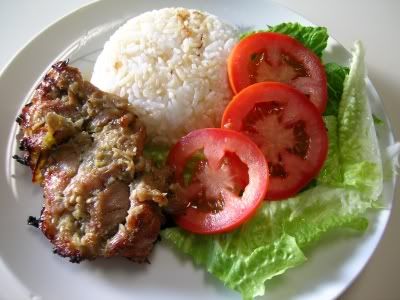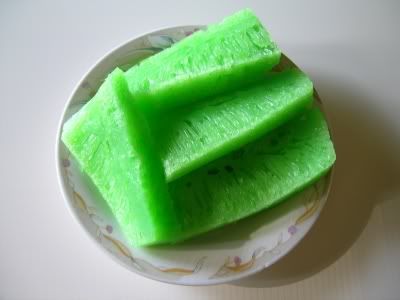 Most chips sold in stores are “floured down”. The producers use more flour than shrimp to boost profits. As a result, shrimp chips or crackers end up tasting nothing like shrimps. This recipe produces a heavily shrimp flavored chip/cracker. If you prefer store bought flavor more simply adjust the ration of shrimp to starch. The weight of starch can be up to 3x the weight of shrimp.
Most chips sold in stores are “floured down”. The producers use more flour than shrimp to boost profits. As a result, shrimp chips or crackers end up tasting nothing like shrimps. This recipe produces a heavily shrimp flavored chip/cracker. If you prefer store bought flavor more simply adjust the ration of shrimp to starch. The weight of starch can be up to 3x the weight of shrimp. Ingredients:
-500g peeled and deveined shrimp
-250g tapioca starch
-2 scallions (white part only)
-3 cloves garlic
-1 ½ tsp salt
-2 tsp sugar
-1/2 tsp powdered “squid bone”
-whole peppercorns (optional)
What to Do:
Mince scallions and garlic and add to shrimp, sugar and salt. Process shrimp in a food processor into smooth paste. Add powdered squid bone and tapioca starch and mix well. Roll paste into a log and wrap plastic wrap or foil and boil or steam for about 1 hour. Cool and slice into thin chips, before drying in the sun or a food dehydrator. Store dried chips in a cool dry place for up to a year.
To Serve:
Heat oil to 375’F add chips one at a time and fry until puffy and golden (chips will expand 3-4x its original size when fried). For healthier eats, just nuke the chips for about 30 seconds in the microwave.
Note:
“Squid bone” is the thin bone plate found in squids/cuttlefishes. They can be purchased dried from Chinese Herbal Medicine shops. To use, simply scrape with a spoon to get a fine powder. This is what gives the chips its crispy and puffy texture.
12:17 AM |
Category: |
4
comments



















